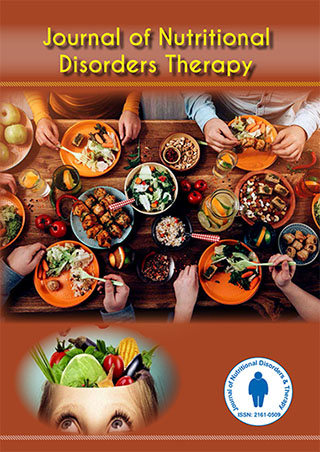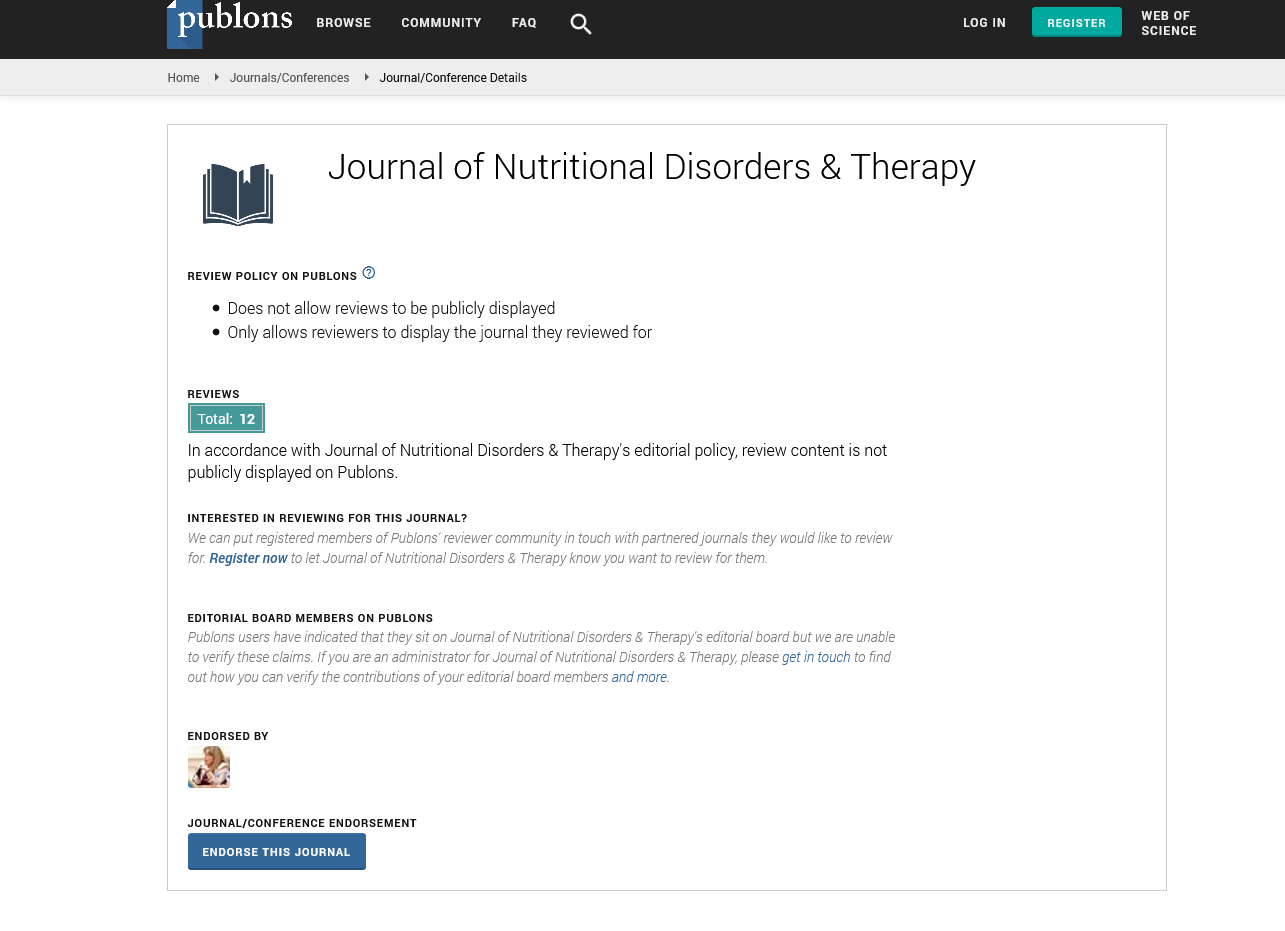Indexed In
- Open J Gate
- Genamics JournalSeek
- Academic Keys
- JournalTOCs
- Ulrich's Periodicals Directory
- RefSeek
- Hamdard University
- EBSCO A-Z
- OCLC- WorldCat
- Publons
- Geneva Foundation for Medical Education and Research
- Euro Pub
Useful Links
Share This Page
Journal Flyer

Open Access Journals
- Agri and Aquaculture
- Biochemistry
- Bioinformatics & Systems Biology
- Business & Management
- Chemistry
- Clinical Sciences
- Engineering
- Food & Nutrition
- General Science
- Genetics & Molecular Biology
- Immunology & Microbiology
- Medical Sciences
- Neuroscience & Psychology
- Nursing & Health Care
- Pharmaceutical Sciences
Perspective - (2025) Volume 15, Issue 2
Association of Nutrient Intake with Hypophosphatemia Related Outcomes in Critical Illness
Bruno Schwitters*Received: 26-May-2025, Manuscript No. JNDT-25-29691; Editor assigned: 28-May-2025, Pre QC No. JNDT-25-29691 (PQ); Reviewed: 11-Jun-2025, QC No. JNDT-25-29691; Revised: 18-Jun-2025, Manuscript No. JNDT-25-29691 (R); Published: 25-Jun-2025, DOI: 10.35248/2161-0509.25.15.330
Description
Critically ill patients in the Intensive Care Unit (ICU) often arrive in a state of compromised nutritional status. Prolonged fasting, hypermetabolism and systemic inflammation contribute to profound nutrient depletion. When nutritional support is reintroduced after a period of starvation, a complex physiological response may occur, often resulting in electrolyte shifts. One such disturbance is Refeeding Hypophosphatemia (RH), a potentially serious condition marked by a sudden drop in serum phosphate levels.
Refeeding hypophosphatemia
Refeeding hypophosphatemia occurs when nutritional support is initiated, particularly with carbohydrates, in malnourished individuals. The introduction of glucose stimulates insulin secretion, which in turn promotes cellular uptake of phosphate, potassium and magnesium. Serum phosphate can fall to dangerous levels, especially in patients with minimal nutritional reserves.
Phosphorus plays an essential role in Adenosine Triphosphate (ATP) production, oxygen delivery through 2,3- diphosphoglycerate in red blood cells and skeletal muscle function. A sharp decline in phosphate levels can lead to respiratory failure, cardiac dysfunction, hemolysis, rhabdomyolysis and neurological impairment.
Macronutrient composition and electrolyte shifts
The macronutrient profile of reintroduced nutrition plays a direct role in the metabolic response and risk of RH. The three macronutrients carbohydrates, proteins and fats each influence insulin release, phosphate redistribution and energy expenditure in unique ways.
Fat intake as an energy source
Fats provide a calorie-dense, insulin-neutral source of energy. Because fat does not stimulate insulin secretion to the same degree as carbohydrates, it is often considered safer in the early phase of refeeding in high-risk patients. Lipid emulsions or high-fat enteral formulas can support energy needs while minimizing insulin-driven electrolyte shifts. Excessive fat intake, however, may impair gastrointestinal tolerance and promote hypertriglyceridemia, especially in septic or pancreatitis patients. Balanced energy delivery from fat and protein can reduce reliance on carbohydrate calories in early refeeding.
Clinical outcomes associated with RH
Refeeding hypophosphatemia has been linked to increased ICU morbidity and mortality, especially when not promptly recognized and treated. Observed complications include respiratory muscle weakness, leading to prolonged mechanical ventilation and higher risk of pneumonia; hemodynamic instability, due to impaired myocardial contractility and oxygen delivery; neurologic impairment, including confusion, seizures and decreased consciousness; and longer ICU stay, with delayed recovery and prolonged need for nutritional and ventilatory support.
In retrospective cohort analyses, patients with moderate to severe RH had higher rates of ventilator dependence and ICU mortality compared to phosphate-stable counterparts. These associations persisted after adjusting for illness severity and comorbidities.
Balancing nutritional needs and risk
Avoiding RH must be balanced against the need for adequate nutritional repletion. Undernutrition in ICU patients can delay wound healing, weaken immune defense and contribute to poor outcomes. Therefore, best practices include individualized plans based on severity of malnutrition, comorbidities and electrolyte trends; team-based care involving dietitians, intensivists, pharmacists and nursing staff; and protocol-driven feeding: starting low, advancing slow and monitoring frequently.
Macronutrient intake plays a significant role in the development and progression of refeeding hypophosphatemia in ICU patients. Carbohydrate-induced insulin release is a key driver of intracellular phosphate shifts, while protein and fat contribute through different metabolic pathways. A cautious and balanced refeeding approach, emphasizing gradual advancement and close biochemical monitoring, remains central to avoiding complications.
Given the vulnerability of ICU patients, preventive strategies must be part of nutritional protocols to improve clinical outcomes, reduce complications and support full recovery. Further research into optimal macronutrient ratios, timing and supplementation will help refine these practices and improve standards of care across diverse critical care settings.
Citation: Schwitters B (2025). Association of Nutrient Intake with Hypophosphatemia Related Outcomes in Critical Illness. J Nutr Disord Ther. 15:330.
Copyright: © 2025 Schwitters B. This is an open-access article distributed under the terms of the Creative Commons Attribution License, which permits unrestricted use, distribution, and reproduction in any medium, provided the original author and source are credited.

